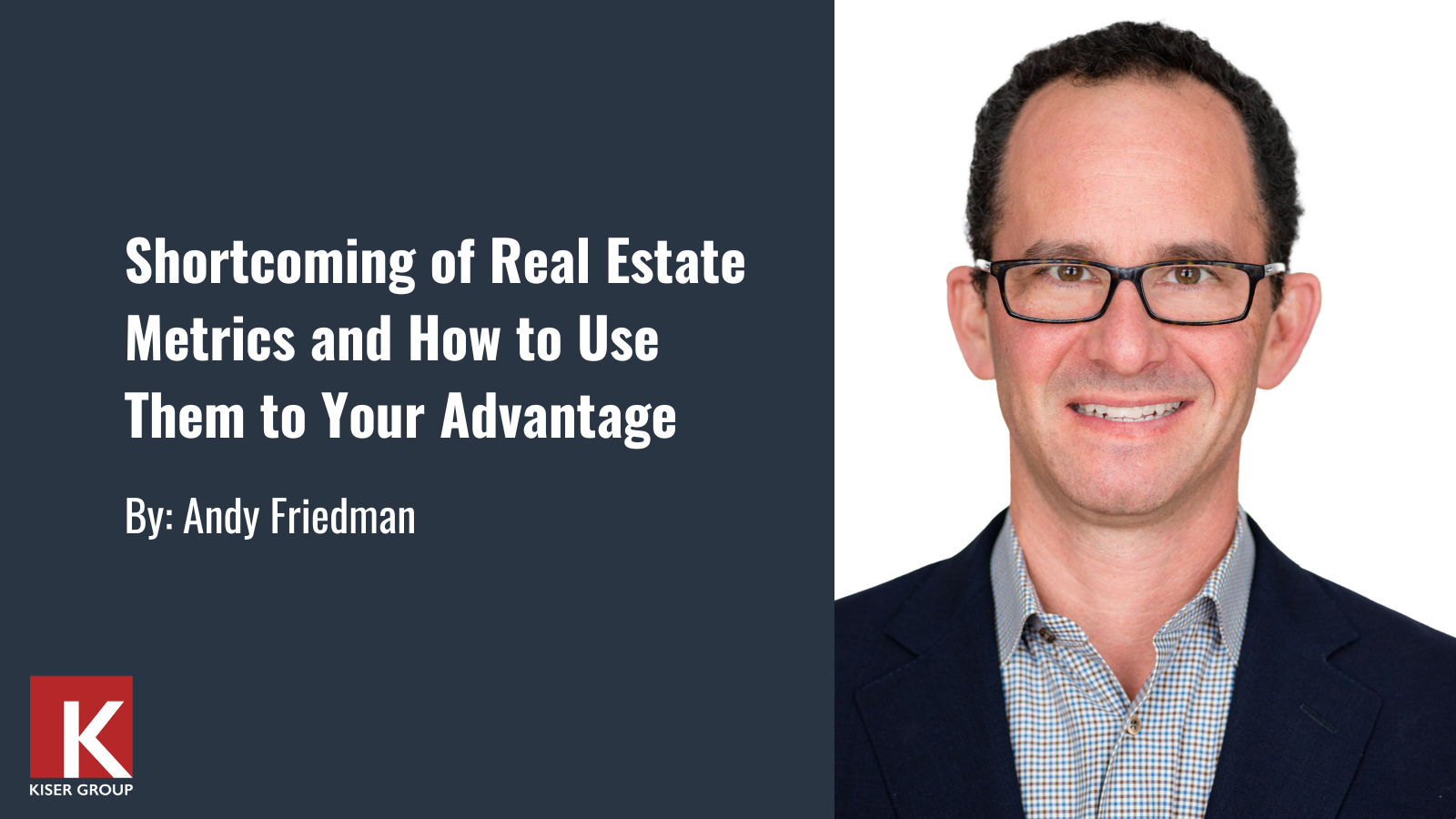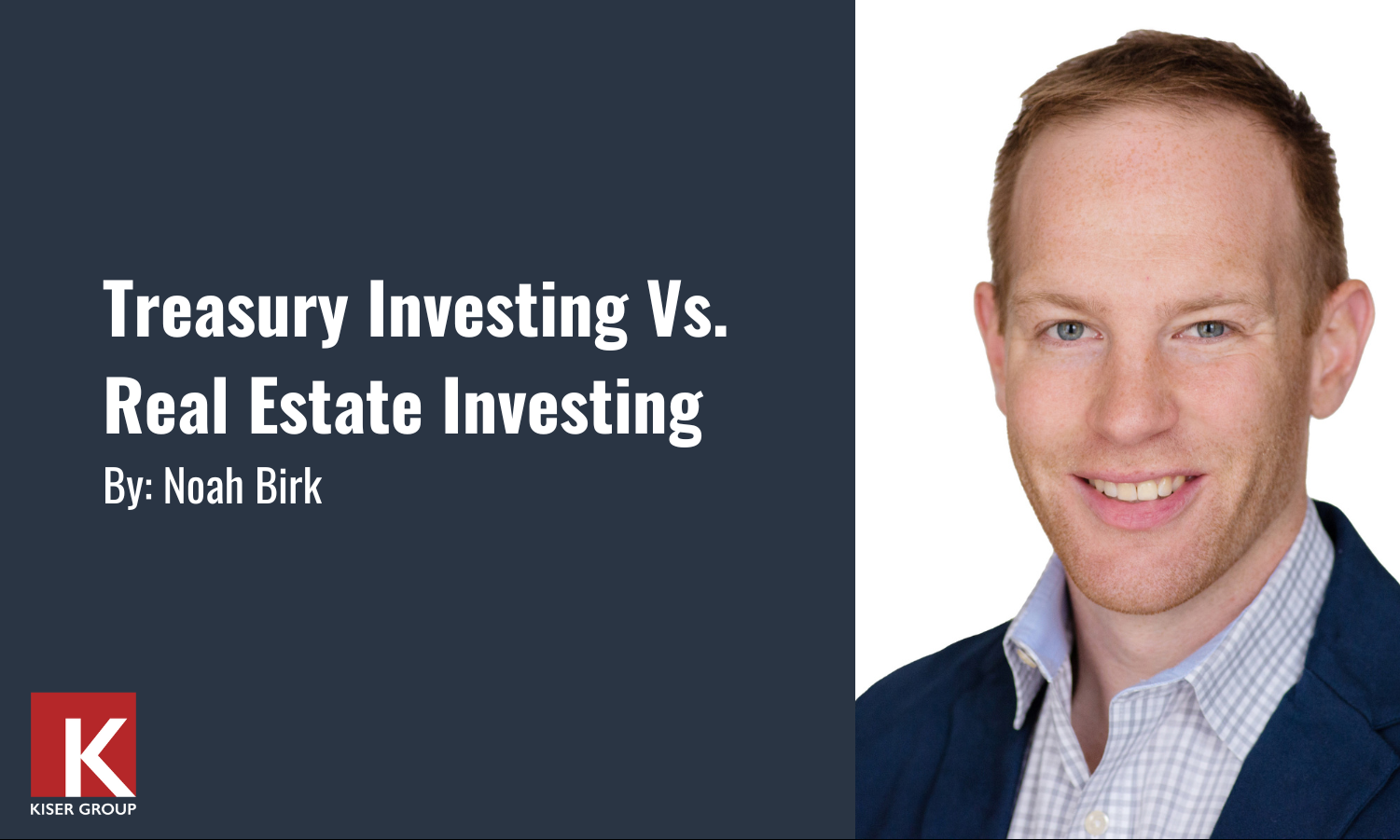09.19.23
Shortcoming of Real Estate Metrics and How to Use Them to Your Advantage

As a multifamily broker, one of my biggest frustrations is with the shortcomings of real estate metrics and how they can become a barrier to dealmaking. No one real estate metric tells the whole story of a property, and some of them are in fact partially subjective. Multifamily investors typically have a large number of opportunities to review, and they understandably need to filter out those that don’t deserve a further look. Many rely on their one favorite metric as that filter. That approach can save time, but it also means that a few good opportunities will be discarded out of hand. Let’s look at the most common valuation metrics and their flaws.
Cap rate
Cap rate is measured by dividing net operating income by price. This shows the yearly percentage return on investment. The problem here is that net operating income is partially subjective. Is it simply the last twelve months’ profit? Last three months multiplied by four? Should the HVAC work the owner did be considered part of the repair and maintenance line item or should it be a capital expenditure? What if the owner was paying an unusually high management fee to a relative? Was there an unusual amount of vacancy and if so, should that be “normalized” in underwriting? For these reasons, we as brokers underwrite to a standard. On the income side, we generally take in: place rents, apply market rents to vacant units, and then apply a market vacancy rate to the whole. On the expense side, we will take many items straight from an owner’s P&L such as property taxes, water, electricity, etc., and then put our standardized numbers in for management, unit turnover, reserves, repairs, and miscellaneous. That may or may not align with an owner’s actual P&L. There is no one true answer for what cap rate is on any given building.
Price per unit
This is the one metric that causes me the most frustration. While price per unit is not subjective at all, it does not consider unit mix. If I have a renovated building for sale in Lincoln Park at $250k per unit, is it a good deal? Yes, if it’s all two bedroom units, and no if it’s all studios. I have had this interaction with investors over and over, and it drives me nuts:
Investor: ‘$300k per door is really expensive.’
Andy: ‘It’s all two bed two bath units.’
Investor: ‘Yeah good point, but it still seems expensive.’
A case in point here is the Barry Quad, a 115 unit condominium deconversion I sold in 2021. We closed that deal for $281k a door, a per-unit price that was admittedly high for a dated property (and condo deconversion hassle). The unit mix, however, was better than average- a third of it large one bedroom units, the rest two beds and three beds. What our buyer picked up on was that while an arguably high price per unit, the price per square foot (discussed later) was a value. What used to be 800 square foot one bedrooms are now two bed two bath units. Excessive common areas were duplexed into. Instead of focusing on price per unit or broker cap rate, our buyer dug deeper and found great value in the deal.
Gross Rent Muliplier (GRM)
This is calculated by simply dividing price by yearly rent amounts. While there is a bit of subjectivity on what number to use for annualized rent, the biggest issue here is that expense load is not part of the equation. Let’s consider two buildings, next door to each other and identical in every way other than Building A is separately metered for gas and electric, and Building B is not. Both will have the same exact GRM, but building A will produce much more profit as the owner does not have to pay for in-unit electricity or gas. For the same price, Building A is a much better purchase than Building B despite the fact they have the same GRM. With that said, I have found that the best investors use GRM as their first sniff test, as it’s relatively easy for an investor to mentally adjust for items such as separately metered electric, and those investors know from experience how to estimate the expense load on a building.
Price Per Square Foot
If you are evaluating an office building, a retail space, or a warehouse, this is a great metric as tenant leases are based on a price per rentable square foot. Not so in multifamily. For starters, most multifamily buildings show price per gross square foot- the entire square footage of the building, not all of which is rentable. Why large hallways, janitor closets, and other unusable spaces are factored into this equation is beyond me. Any common area amenities are accounted for in the rent that units achieve. For this reason, I underwrite and market multifamily buildings based on net rentable square feet. That approach, however, is still not perfect. A studio building will sell for more per net rentable square feet than a building with all two bed two bath units. This is because net rent per square foot is not linear. A renovated 300 square foot studio in Lincoln Park will rent for $1,600, or $533 per square foot. A renovated 800 square foot two bed two bath unit will rent for $3,500, or $438 per square foot. The bigger a unit is, the less it will get per square foot, therefore price per square foot for a purchase is highly dependent on unit mix. The same shortcoming of price per unit.== And the best part is that if you try to solve this by dividing price per square foot by rent per square foot, it becomes GRM. When I tour office investors through multifamily buildings with a high price per square foot ask, this concept does not seem to register with them. The office guys love to key off this metric and they miss the bigger picture.
Expense Ratio
This one comes in second place after price per unit on the list of things that cause me further hair loss. When I hear an investor confidently state that a building they barely know should run at a 40% expense ratio, I wince. As stated in the GRM section, different buildings have different expense profiles. Let’s consider a run-of-the mill dated walkup in Lincoln Park, with average rent of $1,500 and expenses of $600 per unit per month. That expense ratio is 40%. The property is sold, and the new owner spends a bunch of money renovating units, taking it off the boiler and installing HVAC in each unit, on separate meters. Rents are now $2000, and expenses stay roughly the same (tenants now pay for heating and cooling, but vacancy and turnover costs rise). The expense ratio of this building is now 30%. Yes, this a simplified example and yes operating costs have inflated quite a bit recently, but to believe that every building in a given area must operate at XX% expense ratio is incorrect.
So how does an investor use this to their advantage, without spending an hour on preliminary due diligence on every building they see on an email blast or hear about from a broker? Take every metric and see how many are inside or outside of the box. If all metrics are outside of an investor’s box, it’s probably not a fit. If all but one or two are inside the box, find out why the others are not inside the box. There’s usually a good reason, and if you are willing to spend a bit more time understanding the discrepancy, you may see value that everyone else is overlooking.
